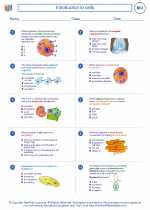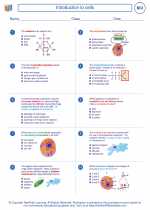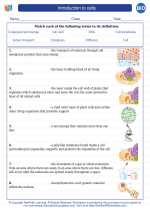Grasses
Grasses are a diverse group of flowering plants that belong to the family Poaceae. They are some of the most important and widespread plants on Earth, with over 10,000 species that inhabit a variety of ecosystems, from tropical rainforests to Arctic tundras. Grasses are characterized by their long, narrow leaves, hollow stems, and unique reproductive structures known as inflorescences.
Anatomy of Grasses
Grasses have a unique anatomy that sets them apart from other plant groups. Their leaves are long and narrow, with parallel venation. The stems of grasses are typically hollow and jointed, known as culms. The inflorescences of grasses are specialized structures that contain the flowers and seeds. These can take the form of spikelets, panicles, or racemes, depending on the species.
Ecological Importance
Grasses play a crucial role in ecosystems around the world. They form the foundation of many food webs, providing food and habitat for a wide range of animals, from insects to large herbivores. Grasslands, which are dominated by grass species, are one of the most widespread and important ecosystems on Earth. Additionally, grasses are also important for soil stabilization, erosion control, and carbon sequestration.
Reproduction and Life Cycle
Grasses reproduce through the production of seeds, which are contained within the inflorescences. The flowers of grasses are typically wind-pollinated and produce small, lightweight seeds that are easily dispersed by the wind. The life cycle of a grass plant typically involves germination of the seed, growth of the seedling, maturation into a mature plant, and ultimately, the production of seeds to start the cycle anew.
Human Uses
Grasses have a multitude of uses for humans. They are a staple food source for many cultures, providing grains such as rice, wheat, and corn. Additionally, grasses are used as fodder for livestock, and many species are cultivated as ornamental plants. In addition, grasses are also used in the production of biofuels and as a source of fiber for making paper and textiles.
Study Guide
- Describe the unique anatomy of grasses and how it differs from other plant groups.
- Discuss the ecological importance of grasses and their role in various ecosystems.
- Explain the reproductive strategies of grasses and how they contribute to their widespread distribution.
- Explore the various human uses of grasses and their economic and cultural significance.
- Identify and compare different grass species and their adaptations to specific environments.
[Grasses] Related Worksheets and Study Guides:
.◂Biology Worksheets and Study Guides High School. Introduction to cells

 Worksheet/Answer key
Worksheet/Answer key
 Worksheet/Answer key
Worksheet/Answer key
 Vocabulary/Answer key
Vocabulary/Answer key
 Vocabulary/Answer key
Vocabulary/Answer key
 Vocabulary/Answer key
Vocabulary/Answer key
 Vocabulary/Answer key
Vocabulary/Answer key
